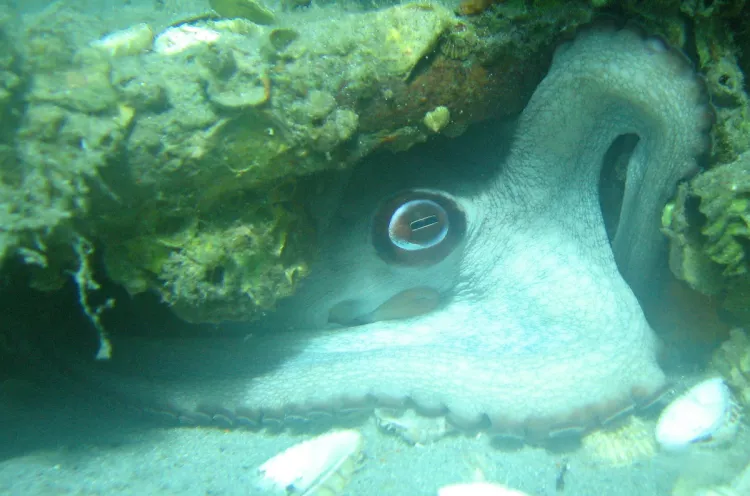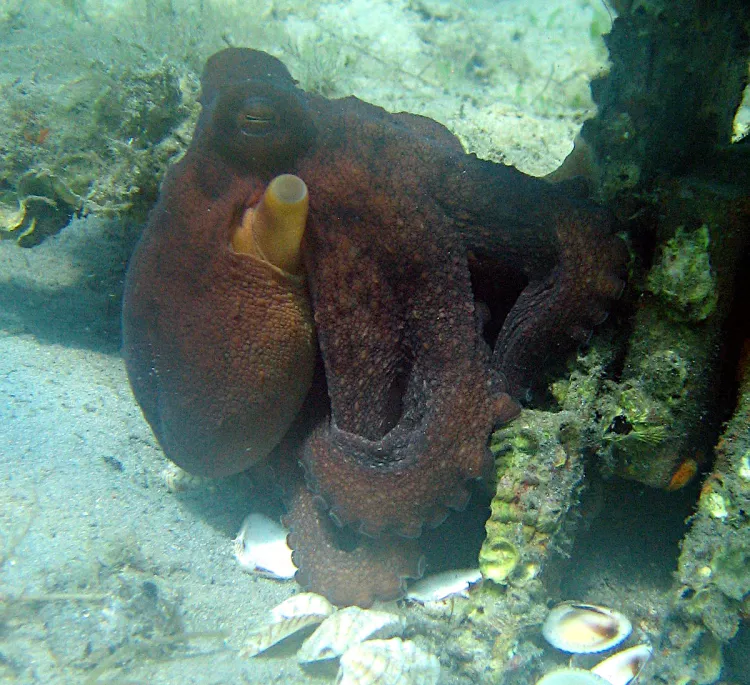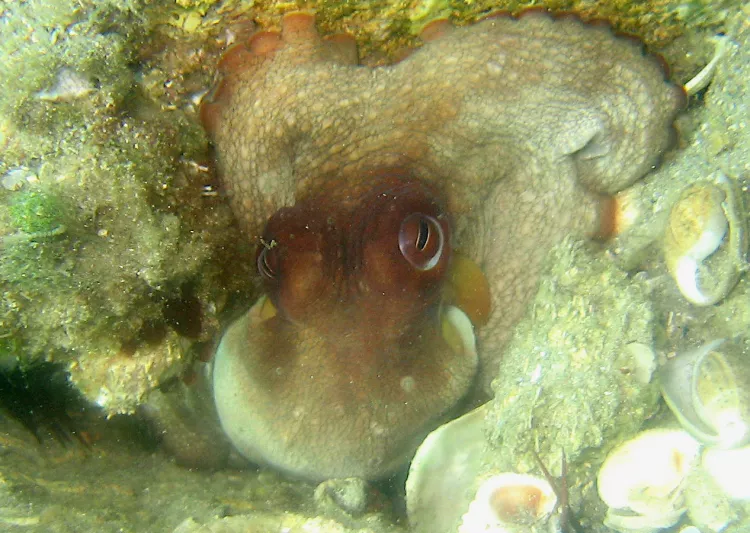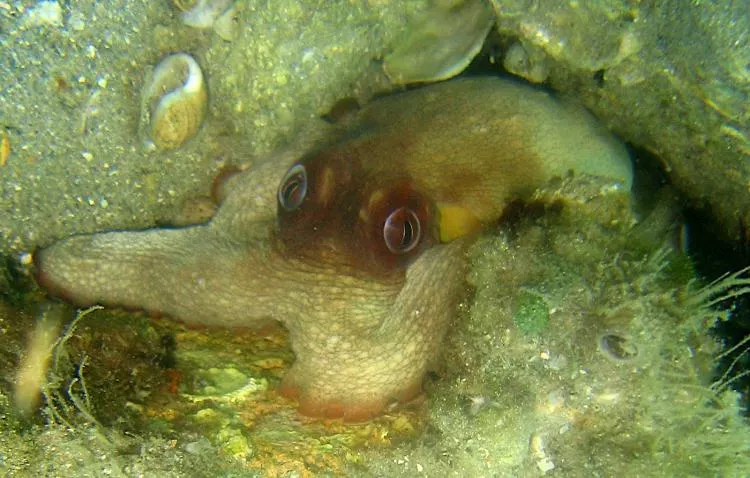Octopus Death Spiral Mystery: Cholesterol Shifts Linked to Bizarre End-of-Life Behaviour
In the enigmatic world of octopuses, where intelligence and mystique collide, a tragic tale unfolds with each maternal chapter. Researchers from the University of Chicago, the University of Washington, and the University of Illinois Chicago (UIC) have peeled back the layers of this narrative, revealing a bizarre connection between an octopus mothers' demise and a dramatic shift in cholesterol metabolism.
The study sheds light on the perplexing end-of-life behaviour exhibited by these intelligent creatures, revealing a connection between their demise and a dramatic shift in cholesterol metabolism within the optic gland.
The heartbreaking cycle begins after a mother octopus lays her eggs. She undergoes a perplexing transformation, ceasing to eat and withering away. By the time her offspring emerge, she succumbs to death. Astonishingly, some octopuses in captivity appear to accelerate this process intentionally, engaging in self-mutilation and contorting their arms into a tangled mess.
The key to this macabre maternal behaviour seems to lie in the optic gland, an organ analogous to the pituitary gland in mammals. For years, the mechanism triggering this grim death spiral remained elusive. However, the recent study reveals that the optic gland in maternal octopuses undergoes a significant shift in cholesterol metabolism, leading to profound changes in the production of steroid hormones.

Dr. Z. Yan Wang, the lead author of the study and Assistant Professor of Psychology and Biology at the University of Washington, expressed surprise at cholesterol's role in the life cycle process. "We know cholesterol is important from a dietary perspective and within different signalling systems in the body too," she said. "It’s involved in everything from the flexibility of cell membranes to the production of stress hormones, but it was a big surprise to see it play a part in this life cycle process as well."
The journey to unravel this mystery dates back to 1977 when Brandeis University psychologist Jerome Wodinsky discovered that removing the optic gland from octopus mothers resulted in them abandoning their eggs, resuming feeding, and living for months longer. While cephalopod biologists speculated about a "self-destruct" hormone, the specifics remained unclear.

Fast forward to 2018, when Wang and Dr. Clifton Ragsdale, Professor of Neurobiology at UChicago, sequenced the RNA transcriptome of the optic gland from California two-spot octopuses. This groundbreaking study linked the optic gland to processes beyond reproduction, showcasing increased activity in genes related to cholesterol metabolism as the animals entered their decline.
The latest research delves deeper, analyzing the chemicals produced by the maternal octopus optic gland. Collaborating with experts in mass spectrometry at UIC, the team focused on cholesterol and related molecules in the optic gland tissue, unveiling three distinct pathways involved in increasing steroid hormones post-reproduction.
The study not only uncovered the expected pregnancy hormones but also linked components for bile acids and cholesterol to the maternal octopus death spiral. Strikingly, some of these pathways mirror those used for cholesterol production in mice and other mammals, highlighting unexpected similarities across species.
Elevated levels of 7-dehydrocholesterol (7-DHC), a precursor to cholesterol, were identified during the stages of decline. In humans, excessive 7-DHC is toxic and characterizes a genetic disorder known as Smith-Lemli-Opitz syndrome (SLOS). This disorder results in severe developmental and behavioral consequences, mirroring the repetitive self-injury seen in octopus end-of-life behaviors.
Dr. Wang emphasized that disrupting the cholesterol production process in octopuses has serious consequences, mirroring the impact observed in other animals. The findings open a new chapter in understanding the intricate self-destruct sequence in octopuses, paving the way for further exploration of the multiplicity of effects that lead to their peculiar behaviors before death.
As the enigmatic world of cephalopods continues to captivate researchers, this study not only unravels a long-standing mystery but also underscores the tiny and underappreciated intricacies of these fascinating creatures' lives.


























